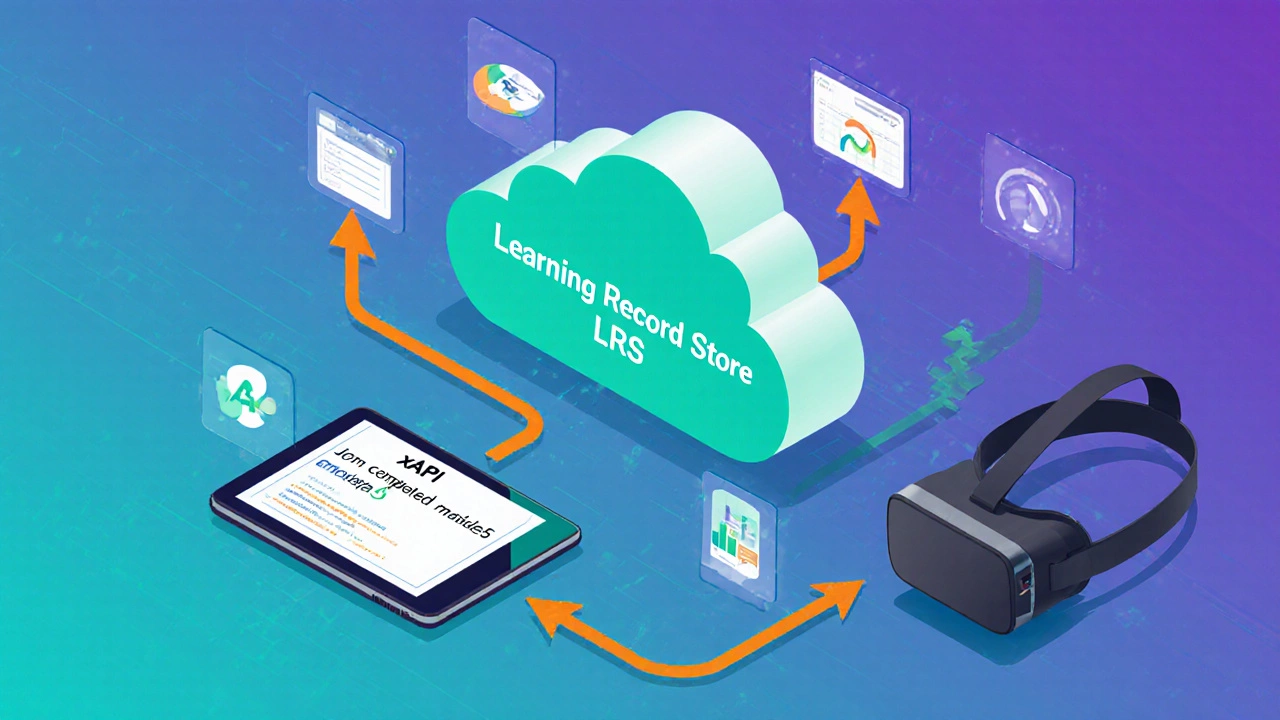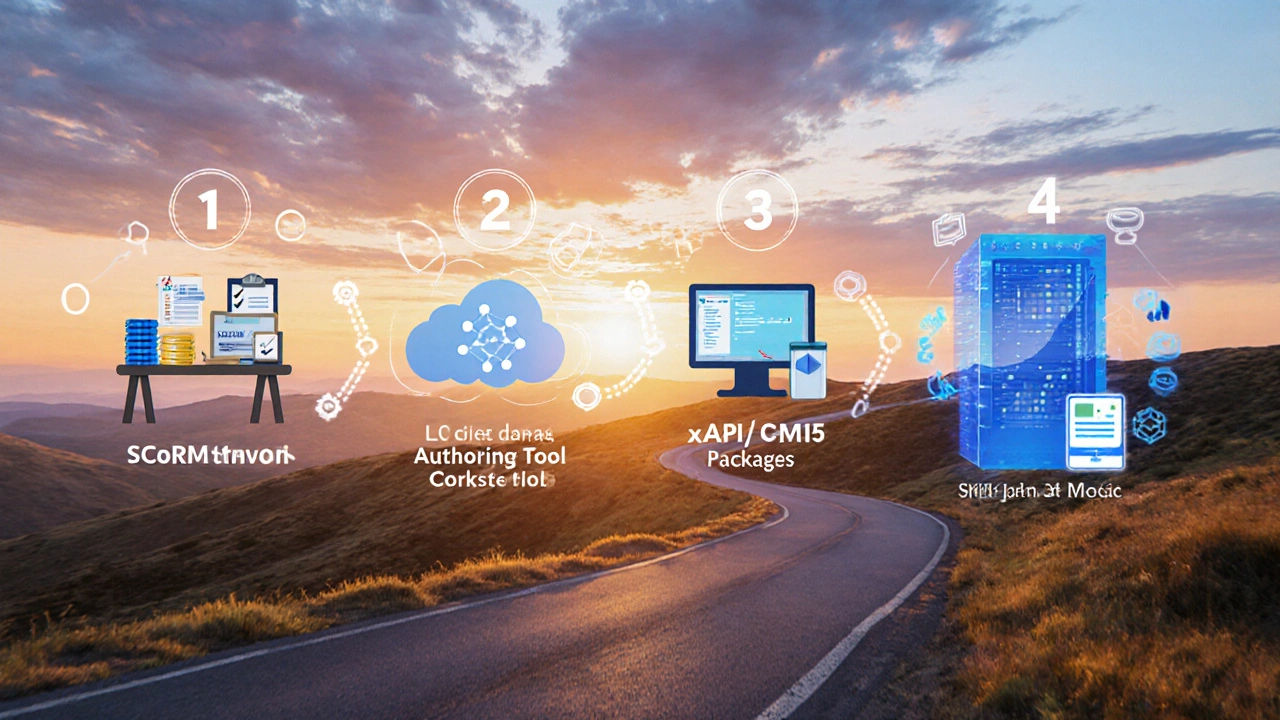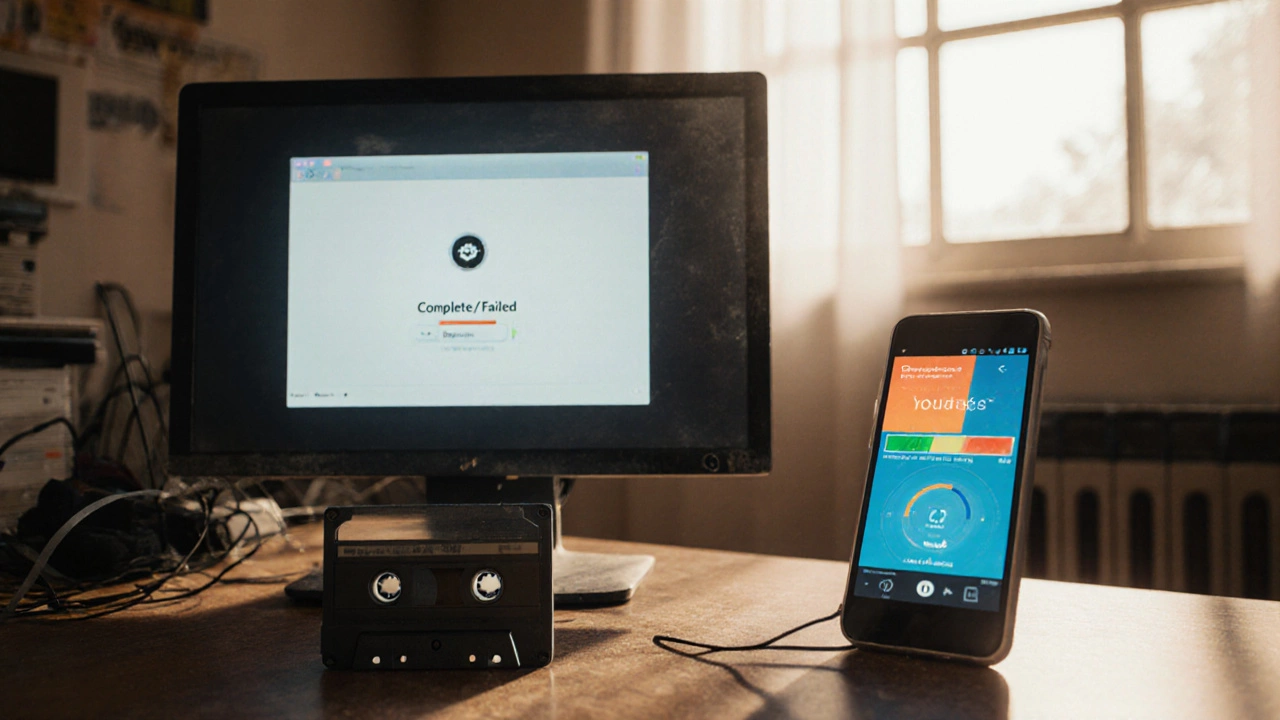SCORM Alternative Selector
Find the Right SCORM Alternative
Select your key requirements to determine which e-learning standard best fits your needs.
SCORM has been the backbone of e‑learning for decades, but it’s starting to feel like a cassette tape in a streaming world. If you’ve been wrestling with its limits - no offline tracking, clunky analytics, poor mobile support - you’re not alone. Below you’ll find the new standards that are taking SCORM’s place, why they matter, and how you can move your courses over without pulling your hair out.
Key Takeaways
- SCORM’s biggest flaws are its lack of granular data, poor offline capability, and limited mobile friendliness.
- SCORM alternatives such as xAPI, CMI5, and LTI 1.3 provide richer data, better cross‑platform support, and easier integration with modern Learning Experience Platforms (LXPs).
- Choose the right replacement based on your need for data depth, offline use, or ecosystem compatibility.
- A step‑by‑step migration checklist can get most content moved in weeks, not months.
- Future trends point toward AI‑driven analytics and deeper interoperability, so pick a standard that can grow with you.
Let’s break down why SCORM is on its way out and what you should look at next.
Why SCORM Is Losing Steam
First, a quick refresher: SCORM is a set of technical specifications for packaging e‑learning content and tracking simple completion data. It works fine for basic quizzes, but its data model caps at ‘complete’, ‘passed’, ‘failed’, and a few timestamps. Modern training wants to know *how* a learner interacts - which videos they replay, how long they dwell on a slide, what micro‑learning nuggets they skip.
Another pain point is mobile. SCORM was designed for desktop browsers; trying to run it in a native app or offline scenario leads to broken reporting. Add to that the rise of Learning Experience Platforms that blend content, social learning, and AI recommendations - SCORM simply can’t feed the richer data those platforms need.
The New Standards Shaking Up E‑Learning
Enter the new kids on the block. They all aim to solve SCORM’s biggest complaints while staying backward‑compatible enough to protect your existing investment.
xAPI (Experience API)
Often called TinCanAPI, xAPI records any learning activity as a statement: actor verb object. Think “Johncompletedmodule5” or “Mariawatchedvideo10seconds”. These statements go to a Learning Record Store (LRS) where you can query detailed analytics, merge data from mobile apps, simulations, and even real‑world tasks.
Key strengths: granular data, offline support (store statements locally then sync), language‑agnostic JSON format. Weakness: you need an LRS and a bit more development work.
CMI5
CMI5 builds on xAPI but adds a clear “launch‑and‑track” container that feels familiar to SCORM developers. It defines how a course is packaged, how a learner’s session starts, and how completion is reported - all using xAPI statements under the hood.
If you love xAPI’s data power but miss SCORM’s roll‑up logic, CMI5 is the sweet spot. It also includes a built‑in “resume” feature, which is great for mobile learners who hop in and out.
LTI 1.3 (Learning Tools Interoperability)
LTI isn’t a content packaging spec; it’s a way to embed external tools (like an LXP, assessment engine, or VR simulation) inside a Learning Management System. Version 1.3 adds OAuth2.0 security and deep linking, making the integration smoother.
Use LTI when you need to pull in third‑party tools without re‑hosting them. It plays nicely with xAPI - many LTI tools emit xAPI statements for analytics.
Other Notable Mentions
- HTML5 - Moves content to web standards; not a tracking spec but a delivery engine that works everywhere.
- AICC - An older standard that some legacy companies still use; mostly being retired.
- ADL Initiative - The organization behind SCORM and xAPI; continues to publish guidance and conformance tools.

Feature Comparison
| Feature | SCORM | xAPI (TinCan) | CMI5 | LTI 1.3 |
|---|---|---|---|---|
| Data granularity | Basic (completion, score) | High (any activity captured) | High (xAPI‑based) | Depends on tool, often high |
| Offline capability | No | Yes (store locally) | Yes (built‑in resume) | No (requires live connection) |
| Mobile friendliness | Poor | Excellent | Excellent | Good (via web views) |
| Implementation effort | Low (many LMS support out‑of‑the‑box) | Medium‑High (needs LRS) | Medium (CMI5 package + LRS) | Low‑Medium (setup OAuth, deep links) |
| Standard authority | ADL, legacy | ADL, widely adopted | CMI5 Committee, xAPI base | IMS Global, industry‑wide |
How to Choose the Right Replacement
Not every organization needs the full power of xAPI. Ask yourself these three questions:
- Do I need detailed, cross‑platform analytics? - If yes, xAPI or CMI5.
- Will learners use mobile or offline devices? - Choose xAPI or CMI5 for offline sync.
- Am I integrating third‑party tools rather than hosting all content? - LTI 1.3 is the cleanest path.
Map your answers to the table above, then pick the simplest spec that meets the need. For many midsize firms, CMI5 offers the best balance of SCORM familiarity and modern data depth.

Migration Checklist - Moving From SCORM to a New Standard
Here’s a practical, step‑by‑step plan you can follow this week.
- Audit existing SCORM packages. List which courses are still active, which need updates, and which can be retired.
- Select an LRS. Look for cloud‑based options with a free tier for testing (e.g., Learning Locker, GrassBlade).
- Choose a conversion tool. Tools like SCORM‑to‑xAPI converters or authoring platforms (Articulate Rise 360, iSpring) can re‑package content.
- Map data fields. Decide which SCORM data points (completion, score) map to xAPI verbs (completed, passed) and which new statements you’ll add.
- Update launch URLs. Replace SCORM’s
scorm_api.jscalls with xAPI endpoint calls; for CMI5, use the provided launch wrapper. - Test offline sync. Run courses on a mobile device, disable internet, then reconnect to confirm statements upload.
- Integrate with your LMS/LXP. Configure the LMS to forward xAPI statements to the LRS, or set up LTI deep links if you’re using external tools.
- Roll out and monitor. Use the LRS dashboards to watch for gaps, then tweak statements or packaging as needed.
Most teams finish the core migration in 2-4 weeks, leaving time to fine‑tune analytics afterward.
Future Trends: What’s Next After xAPI?
Even the newest standards will evolve. Keep an eye on these upcoming ideas:
- AI‑driven analytics. LRSs are adding machine‑learning models that auto‑detect skill gaps and recommend content.
- Open‑profile data models. Initiatives like Verifiable Credentials aim to let learners own their learning records across platforms.
- VR/AR integration. As immersive training grows, xAPI statements will capture 3‑D interactions (e.g., “picked up virtual wrench”).
Choosing a flexible standard now (xAPI/CMI5) ensures you can plug these innovations in later without a full rebuild.
Frequently Asked Questions
Is xAPI compatible with my existing LMS?
Most modern LMSs support xAPI out of the box or via plugins. If your LMS only lists SCORM, check the vendor’s marketplace for an xAPI connector or consider a thin‑layer LTI tool that forwards statements to an LRS.
Do I need to replace every SCORM course?
Not necessarily. Run a cost‑benefit analysis: if a course is still delivering value and you don’t need deeper data, you can leave it as‑is. Focus migration on high‑traffic or analytics‑heavy modules.
What’s the difference between CMI5 and plain xAPI?
xAPI is the low‑level data protocol; CMI5 adds a packaging format, launch rules, and built‑in resume handling. Think of xAPI as the language and CMI5 as the storybook that tells the system how to use that language.
Can LTI replace SCORM completely?
LTI isn’t a direct replacement because it doesn’t define how content is packaged or how detailed interaction data is stored. It’s best used alongside xAPI/CMI5 when you need to embed third‑party tools.
How much does an LRS cost?
There are free community editions (e.g., Learning Locker) suitable for small pilots. Paid SaaS options start around $100‑$300 per month for mid‑size enterprises, scaling with statement volume and storage.
Bottom line: SCORM served us well, but the learning world has outgrown its limits. Whether you gravitate toward xAPI for deep analytics, CMI5 for a SCORM‑like experience with modern perks, or LTI for tool integration, you’ll unlock richer data, smoother mobile learning, and a future‑proof stack.
